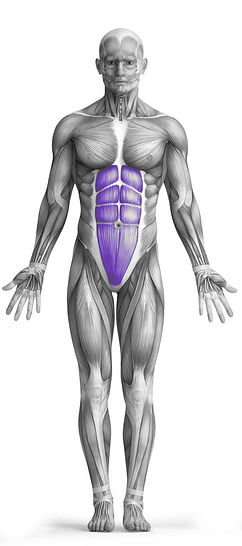Decline Bench Cable Knee Raise 101 Video Tutorial
0

Exercise Synopsis
Target Muscle Group
Abs
Secondary Targets
None
Execution
Compound
Force Type
Pull
Required Equipment
Cable Machine
Fitness Level
Beginner
Variations
None
Alternatives
None
Timer
Hour
Minute
Second
Stopwatch
00:00:00:00
Overview
The Decline Bench Cable Knee Raise is an abdominal-focused exercise designed to strengthen and sculpt the core muscles, specifically targeting the rectus abdominis. Performed using a cable machine, this exercise involves attaching a low cable to the feet while lying on a decline bench. The movement entails raising the knees toward the chest in a controlled manner, engaging the abs throughout the motion to maintain tension and stability. The decline angle intensifies the workload on the core, ensuring maximum activation. With no secondary muscle groups targeted, this exercise isolates the abs effectively, making it an excellent choice for building core strength and definition.
How to Perform
Position a decline bench so its lower end is near a low pulley cable machine. Ensure the setup is stable and aligned for safe execution.
Connect an ankle strap to the low pulley cable and adjust the weight to a level that challenges your abs without compromising form.
Secure the ankle straps around both ankles, ensuring they are snug but not overly tight to allow for comfortable movement.
Lie back on the decline bench with your head positioned at the elevated end. Grip the handles or pads at the top of the bench firmly for added stability.
Slightly bend your knees and lift them just enough to take the tension off the weight stack, maintaining control and engagement in your core.
Slowly draw your knees upward toward your chest as far as you can, focusing on contracting your abdominal muscles throughout the movement. Avoid using momentum or engaging your hip flexors excessively.
Pause briefly at the top of the motion, holding the contraction for a moment to maximize the activation of your lower abs.
Gradually lower your legs back to the starting position, maintaining tension on the cable and control over the descent. Do not let the weight stack touch down between repetitions to keep constant tension on the abs.
Repeat for the desired number of repetitions, ensuring that your form remains consistent and controlled throughout the set.
Breathe steadily during the exercise, exhaling as you lift your knees and inhaling as you lower them, to enhance focus and core engagement.
★ Bonus: For exercises that involve external weights (such as dumbbells, barbells, or machines), the One Rep Max (1RM) calculator can help you estimate your maximum lifting capacity. Use it to track your strength progress and adjust your training for optimal results.
Tips
Hold the position at the top of the movement, with your knees fully raised, for 2 to 5 seconds to increase the challenge and maximize muscle engagement.
Maintain constant tension on the cable by ensuring the weight stack does not make contact at any point during the exercise.
How Not to Perform
Avoid Using Momentum: Do not swing your legs or use rapid movements to lift your knees. Focus on slow, controlled motions to engage the abs fully and prevent strain on other muscles.
Do Not Overload the Weight: Using excessive weight can compromise form and shift the effort to your hip flexors instead of your abs. Select a weight that challenges your core while allowing proper technique.
Maintain Proper Bench Positioning: Ensure the decline bench is securely placed and aligned with the cable machine. A poorly positioned bench can lead to instability and increase the risk of injury.
Do Not Arch Your Lower Back: Keep your lower back pressed firmly against the bench throughout the exercise to prevent strain and ensure your abs remain the primary focus.
Avoid Letting the Weight Stack Touch: Keep constant tension on the cable by preventing the weight stack from touching down between repetitions. Allowing it to rest reduces effectiveness and interrupts the engagement of your core.
Don’t Grip Too Tightly: Avoid over-gripping the bench handles, as this can lead to tension in your arms and shoulders. Use a firm but relaxed grip to stabilize yourself without detracting from the core engagement.
Keep Movements Smooth and Controlled: Avoid jerky or rushed motions when raising or lowering your knees. Smooth execution ensures proper activation of the abdominal muscles and reduces the risk of injury.
Do Not Overextend Your Range of Motion: Lifting your knees too high or lowering them too far can shift the workload to your hip flexors or strain your lower back. Aim for a comfortable range that keeps the focus on your abs.
Watch Your Breathing: Do not hold your breath during the exercise. Exhale as you lift your knees and inhale as you lower them to maintain rhythm and core stability.
Avoid Distractions: Stay focused on your form and core engagement throughout the set. Distractions can lead to poor technique and reduced effectiveness.
Variations
Variations of fitness exercises refer to different ways of performing a specific exercise or movement to target various muscle groups, intensities, or goals. These variations aim to challenge the body differently, prevent plateaus, and cater to individuals with varying fitness levels.
Alternatives
Alternative exercises in fitness refer to different movements or activities that target similar muscle groups or serve the same training purpose as the primary exercise. These alternative exercises can be used as substitutes when the original exercise is unavailable or challenging to perform due to various reasons such as equipment limitations, injuries, or personal preferences.








